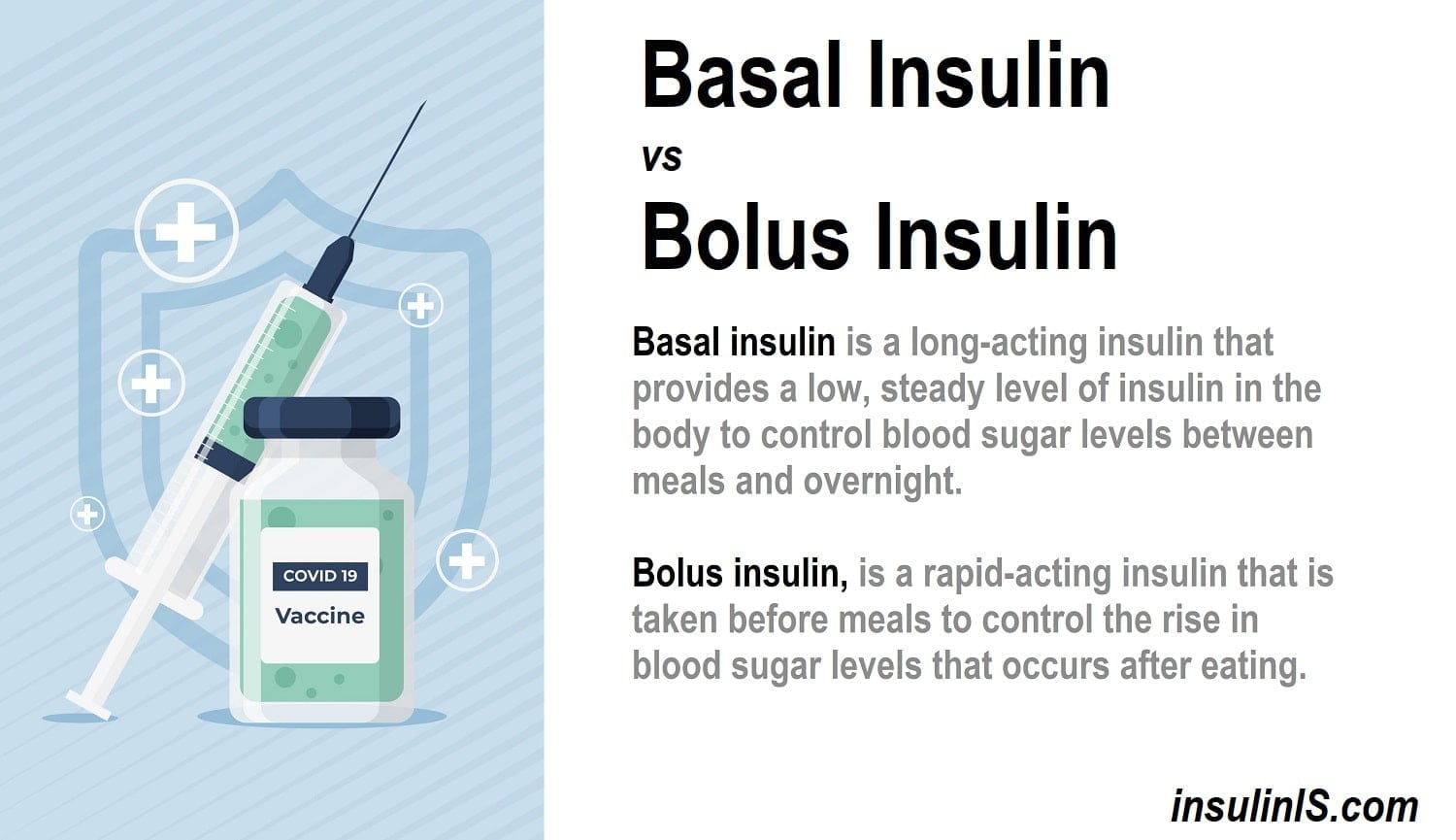Basal insulin and bolus insulin are two different types of insulin used to manage diabetes. Basal insulin is a long-acting insulin that provides a low, steady level of insulin in the body to control blood sugar levels between meals and overnight. Bolus insulin, on the other hand, is a rapid-acting insulin that is taken before meals to control the rise in blood sugar levels that occurs after eating.
Both basal and bolus insulin are essential components of a comprehensive diabetes treatment plan, and the right combination of these insulins is unique to each individual and can be determined with the help of a healthcare professional.
Basal Insulin vs Bolus Insulin Features
| Feature | Basal Insulin | Bolus Insulin |
|---|---|---|
| Type | Long-acting | Rapid-acting |
| Timing | Once or twice daily | Before meals |
| Purpose | Control blood sugar levels between meals and overnight | Control blood sugar spikes after meals |
| Insulin release | Slow and steady | Fast and short-acting |
| Examples | Lantus, Levemir, Tresiba | Novolog, Humalog, Apidra |
Additional details about Basal insulin vs bolus insulin:

Basal insulin:
Basal insulin is a type of insulin used to control blood sugar levels in people with diabetes. It is a long-acting insulin that provides a low, steady level of insulin in the body to regulate blood sugar levels between meals and overnight.
Basal insulin helps to prevent high or low blood sugar levels, providing a constant background level of insulin. The amount of basal insulin needed depends on factors such as the individual’s blood sugar level, physical activity, and overall health.
Professionals can help determine the right dosage of basal insulin for a person with diabetes. Examples of basal insulin include Lantus, Levemir, and Tresiba.
Comparison
- Usually given once or twice a day
- Helps control blood sugar levels between meals and overnight
- Provides a slow and steady insulin release
- Examples of basal insulin include Lantus, Levemir, and Tresiba.
Bolus insulin:
Bolus insulin is a type of insulin used to control blood sugar spikes in people with diabetes. It is a rapid-acting insulin that is taken before meals to help regulate the rise in blood sugar levels that occurs after eating. Bolus insulin starts working quickly, usually within 15 minutes, and its effects last for several hours.
The amount of bolus insulin needed depends on factors such as the individual’s blood sugar level, the type and amount of food being consumed, and the person’s overall health.
Healthcare professionals can help determine the right dosage of bolus insulin for a person with diabetes. Examples of bolus insulin include Novolog, Humalog, and Apidra.
Comparison
- Usually given before meals
- Helps control blood sugar spikes after meals
- Provides a fast and short-acting insulin release
- Examples of bolus insulin include Novolog, Humalog, and Apidra.
FAQ
Here are some frequently asked questions about Basal insulin vs Bolus insulin:
Basal insulin is a type of insulin that provides a low, steady level of insulin in the body to regulate blood sugar levels between meals and overnight. It is a long-acting insulin that helps prevent high or low blood sugar levels.
Bolus insulin is a type of insulin that helps control blood sugar spikes after meals. It is a rapid-acting insulin that is taken before meals to regulate the rise in blood sugar levels that occurs after eating.
Basal insulin is long-acting and provides a slow and steady insulin release, while bolus insulin is rapid-acting and provides a fast and short-acting insulin release. Basal insulin is taken once or twice daily to control blood sugar levels between meals and overnight, while bolus insulin is taken before meals to control blood sugar spikes after eating.
Both basal insulin and bolus insulin are essential components of a comprehensive diabetes treatment plan, and they can be used by people with type 1 or type 2 diabetes. The right combination of these insulins is unique to each individual and can be determined with the help of a healthcare professional.
The side effects of basal insulin and bolus insulin may include hypoglycemia (low blood sugar), weight gain, skin irritation at the injection site, and an increased risk of infections. These side effects can vary from person to person and can be managed with the help of a healthcare professional.
conclusion
Basal insulin and bolus insulin are two important types of insulin used to manage blood sugar levels in people with diabetes. They work differently, with basal insulin providing a low, steady insulin release and bolus insulin providing a fast and short-acting insulin release.
The right combination of these insulins can help people with diabetes to maintain healthy blood sugar levels and reduce the risk of complications associated with uncontrolled diabetes.
Note for people with diabetes to work closely with a healthcare professional to determine the right insulin regimen for their individual needs.





